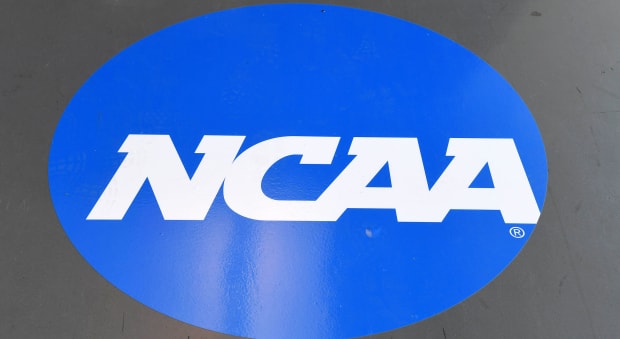New on Sports Illustrated: Giving Spring Athletes Extra Year Is the Right Thing to Do, but Presents New Complexities
The NCAA granting spring athletes an extra year of eligibility was the appropriate gesture, but the devil will be in the details—and the dollars.
The NCAA has left the front porch light on for Class of 2020 spring sports athletes. The runners, jumpers, softball players, baseball players and others who had their college careers cut short earlier in March
can come back to school for another year.Winter sports athletes? Not so much. Unfortunate as it is, that was always a long shot.
The spring sports that were canceled just as seasons had begun were the more obvious casualty. Three centuries ago in mid-March, when the decisions were made to terminate those seasons, it seemed too early to call off the mid-June College World Series. By the end of March, that decision isn’t questioned by anyone.

So, yes, this is an appropriate gesture, and let’s take a moment to acknowledge that. The NCAA and its member schools, so often derided for allegedly treating student-athletes as chattel, took care of the ones most affected by this extraordinary crisis. The vast majority of these athletes are not going to make a dime for their schools, but the schools are going to re-invest in them.
At the same time, this new legislation is not easily transferrable from the Division I Council vote Monday to on-campus reality. Financing more scholarships is a huge consideration. Rosters could be bloated, with a correlated impact on playing time and concerns about exceeding roster limits. The nuts and bolts of larger teams—locker room space, medical staffing, training table allotments and campus housing assignments—all must be factored in.
“You don’t want the complexity of this to get in the way of doing what’s right for the student-athletes,” said Oklahoma athletic director Joe Castiglione. “But there are a wide range of complexities to deal with. This comes with unintended consequences, and some of them are difficult consequences.”
Sports Illustrated communicated with half a dozen athletic directors from across the D-I spectrum after the ruling came down Monday night. They all liked the idea behind restoring a lost opportunity to their athletes—but they also recognized that the devil will be in the details. And the dollars.
The biggest single issue is this: Adding scholarship costs at a time when universities are bracing for big revenue hits on every front—athletically, academically and in terms of donor contributions and endowment gifts. A spiraling economy creates a tricky higher education backdrop for fielding bigger teams.
“This is likely to offer an interesting insight into school priorities,” said one Power 5 athletic director. “Expanding grant-in-aid funding at the same time so many schools are imposing hiring freezes and cutting department budgets.”
Fact is, this will be meatball surgery all over America. It will look different everywhere. It likely will lead to a spike in transfers, and potentially a rash of decommitments from recruits who were planning to sign national letters of intent in the spring period but now see a different landscape in front of them.
“By force of nature, there aren’t going to enough chairs to sit in when the music stops,” Castiglione said.
As this unprecedented Back To Campus movement unfolds, you can (as always) expect the athletic departments with the deepest pockets to come out in the best shape.
Power 5 schools sitting on larger revenue war chests can seemingly afford the additional outlay in scholarships. Group of Five schools have less money to play with. Non-FBS schools theoretically could have even less. And so on down the line.
But even within those strata, there are different economic equations. Scholarships at Alabama, Cincinnati and VCU don’t cost anywhere near what they do at Vanderbilt, SMU and Davidson. Do the private schools with the big tuitions want to take on the additional expense?
Then there is the Ivy League, which simply doesn’t do graduate athletes. Is that rule waived, or do athletes from those schools who just received another year of eligibility flood the transfer market?
Almost all spring sports are equivalency sports. That is, they have a set scholarship limit that is smaller than the size of the overall roster, which means scholarships are broken up and parceled out—unevenly. The star pitcher may be on a full ride while the average middle infielder is on a partial scholarship. (This is where academic aid, Pell Grants and other funds become part of the complex accounting process.)
This is where the new calculus could become a bit Hunger Games-ish. Schools can decide what size scholarship they want to dole out to returning Class of 2020 athletes—it doesn’t have to be identical to what they were receiving this academic year. Thus an athlete who was on a half scholarship but not performing up to expectations could find himself or herself offered a walk-on spot for 2020–21. At best.
“It was interesting to discover how many of our spring sports coaches were opposed (to the legislation),” one AD said. “They hated the subjectivity inherent in this—many schools will likely only invite the contributors back, and they think the incoming freshmen are getting screwed by clogging the pipeline in front of them.”
There was one consensus among the ADs Monday night: This is just a piece of the giant, shifting puzzle that must be fitted together in the coming months. Nobody knows what is going to happen, and everyone is worried about one thing: a fall without football, or with a lesser version of football.
Every spring sport (and most of the winter and fall ones, too) depend on that revenue gusher. If it is turned off—or turned down—the impact will be massive.
“If we have home football games, it will be a game changer,” said one coach in a non-revenue sport. “If this extends to the fall and we lose some home games, all bets are off.”
Comments
Post a Comment